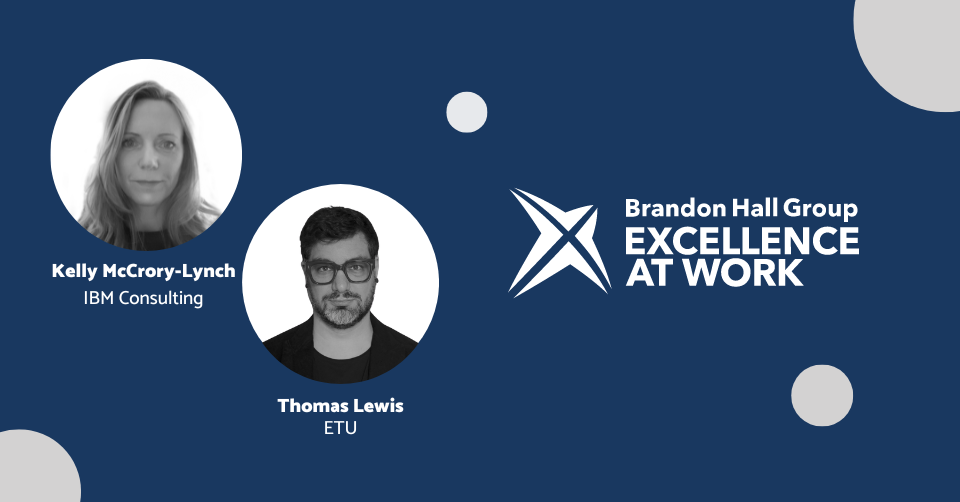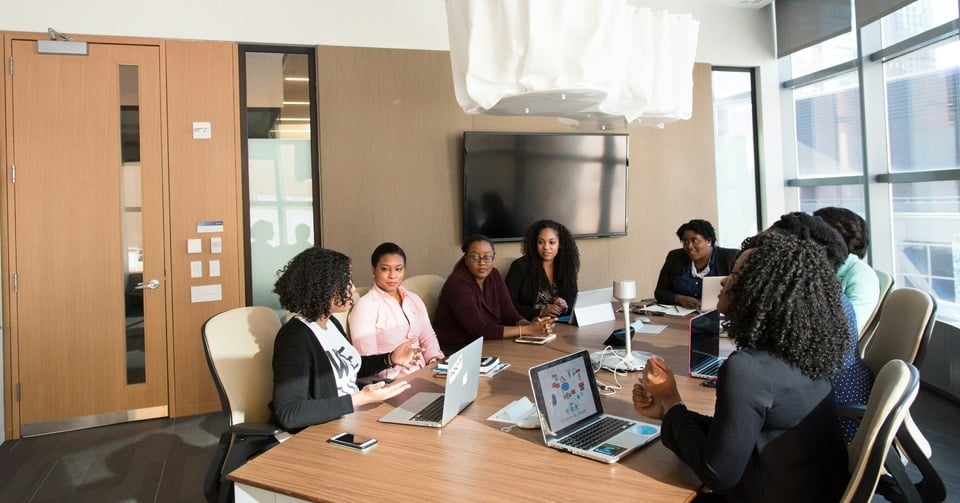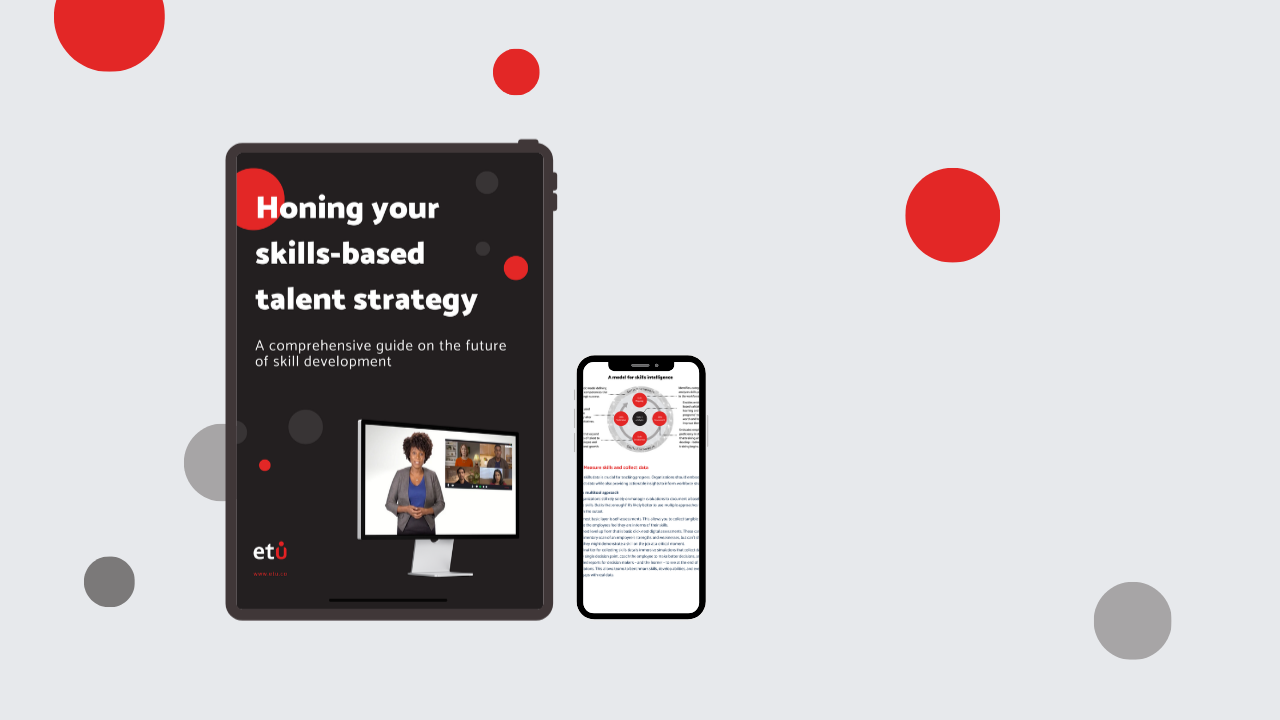
Personalized learning at scale, delivering a measurable training ROI
Executive interview with IBM Consulting and ETU
- Kelly McCrory-Lynch, Learning Strategist, IBM Consulting
- Dr. Thomas Lewis, Director, Learning Solutions, ETU
Kelly and Thomas were interviewed by Rachel Cooke, Brandon Hall Group's Chief Operating Officer and Principal HCM Analyst. They took a deep-dive into tools and strategies for personalized learning at scale, and how to achieve a measurable training ROI.
Q: Kelly, can you talk about the Consulting program at IBM and why personalization is so important?
Kelly: In the years before COVID, we had been expanding the definition of our core consulting skills, modifying our delivery approach from pure face-to-face to blended learning. Mostly, this was a face-to-face program and was expensive to run with a lot of expenses going to travel and venue costs. But most significantly, it was impossible for us to scale. Like everyone else, COVID forced us to shift very quickly. Once we were virtualizing our curriculum, we realized this was a good time to introduce greater full-scale transformation concerning how we approach the entire structure and delivery of the program.
We wanted to dramatically increase Senior Consultant participation from approximately 5,000 learners annually to 20 times that number. We did that in a way that’s focused on learner engagement and enhanced the ability to apply the skills for business impact. We made the content more just-in-time and just-enough-for-me, and shifted from what we want learners to know to what we want them to do differently and drive mastery of the content, as opposed to just completion.
The skills we cover require a personal touch and an opportunity to practice. The best way to do that at scale was by using adaptive learning simulations. This became the initial feature of our program, which we call Track One and is open to all Senior Consultant learners. We partnered with ETU to help us with this huge transformation. Overall, our Consulting program is like a funnel with four tracks. We’re using the ETU platform and adaptive learning to achieve scale at the entry part of our program. As you move further into the program and get to Track Four, it becomes less about scalability and more about face-to-face high-touch mastery.
Q: Thomas, can you explain what is meant by simulation in this context and provide more insights into how this enables personalization, as well as how ETU collaborated with IBM Consulting?
Thomas: At ETU, we develop first-person-perspective simulations with branching narratives that are rooted in robust data architecture. Rather than a traditional learning modality — where we’re measuring completions
and scores — this allows us to get granular with the data and track learners as they progress through the simulations we build.
In the case of these IBM simulations, we basically created an entire season of television in about nine months and chopped it into one-minute segments. We worked with Kelly and her team, looked at the content across Track One and divided it into a theme that we call The Swim Lane.
These are themed buckets where we could create a diagnostic simulation at the front end, then add developmental simulations to allow learners to progress and apply those skills to get that just-in-time, just-enough-for-me training. The front end puts learners in realistic scenarios where the skills they must apply show up. It’s not about getting things right or wrong, it’s having them negotiate the gray areas. With the branching scenarios, the decisions that they make take the story in different directions.
Based on how they perform, we then turn downstream content on and off using the ETU data architecture. This means we can map the core skills a consultant needs based on their brand or role level within the wider training. We can identify skills trends, whether it’s an individual or across geographies, and provide those learners with downstream content or give them the remediation that they need.
Q: Kelly, what impact have you seen from the use of simulations and personalization on the learning program? And what are you hoping to see
as the program becomes fully rolled out?
Kelly: We’re not fully rolled out, but we’ve been receiving extremely positive feedback from the learners regarding the simulations. We’re also in the early stages of calculating seat-time savings. So far, it’s about 25 percent, which is significant.
Once we have a sufficient deployment period, we’ll start to benchmark return-on-learning data points such as employee retention, rate of promotion, employee engagement, learning hours and, most importantly, the impact of training on the application within the business and for our clients. There will also be a targeted identification of skill and capability gaps.
For our Learning organization, this will be useful to enable us to develop and deploy targeted learning interventions where they are most needed while being efficient with our time and resources.
Q: Where do you see the personalization and skill measurement applied to Track One going next?
Kelly: Early '23 will see us complete the rollout of our Track One program and the sunsetting of the previous program. We’ve started working on the architecture for adaptive personalization for Track Two, which is our live virtual classroom element.
High learner performance in Track One will inform what they need to do — or not do — at the Track Two level. As we look to deploy the final stage of the program, the specialized face-to-face masterclass element, learners at this stage will be able to use their personalized journey to guide their focus and make their selections regarding where they are going to spend their time.
Thomas: The beauty of the ETU simulations is that there’s such a thick data story that comes out of every learner’s personalized journey. As we feed into additional tracks, IBM can then use that data to earmark potential high-achievers or those for remediation.
Q: What were some of the key challenges and lessons learned?
Kelly: There are four big considerations. The first is, what is the skill or behavior gap you want to address with learning? You need to know what really “good” looks like in an area, as this is the information that will form your learning narrative or simulation story. Who are the subject matter experts you have to involve and work with throughout the process?
This will need to be a mix of subject matter experts and business subject matter experts. I have a list of 100 people from the business who are all very senior and dedicated their time. Thomas has gotten to know a lot of them as well. They’ve been in on the design sessions and reviewed the scripts.
You also need to think about the medium for your content delivery. We made a design decision early on to go with full video, which is not necessarily what you need for your program. We needed our content to feel as real and personable as possible. The business impact also warranted our investment. Finally, what data are you going to collect from this and what are you going to be able to do with it?
Thomas: That list of 100 names reflects that it’s a global program with cultural nuances. We need to thread the needle and make sure we’re telling stories that are learning assets and will be beneficial to these learners. We need to show how skills are universal but also need to be specific enough so they’re going to land with IBMers regardless of where they’re seated.
Having that blend with a lot of eyes on it is something we’ve kept front of mind. We needed to make sure these simulations are immersive and feel authentic. We’ve succeeded in that.
More Information
Visit our why immersive simulations page to find out more about the business value, or why not contact us for an informal discussion about your training goals?
 Kelly McCrory-Lynch leads learning design for global consulting at IBM Consulting. She is responsible for the learning effectiveness of the newly reimagined Consulting Academy program, and collaborates with business and learning stakeholders globally to implement innovative and personalized learning experiences that have business impact.
Kelly McCrory-Lynch leads learning design for global consulting at IBM Consulting. She is responsible for the learning effectiveness of the newly reimagined Consulting Academy program, and collaborates with business and learning stakeholders globally to implement innovative and personalized learning experiences that have business impact.
With more than 20 years of experience in business consulting and learning development, Kelly focuses on delivering learning solutions that advance the organization’s goals and the learners’ needs. Before joining IBM, Kelly’s initial career as a teacher specializing in early years education formed her passion for learner-centered training which has become the cornerstone of the programs she designs and leads.
She is now back at Queens University Belfast, completing the final year of her Doctorate in Education, where she is researching the area of learner engagement within an online learning platform.
 Thomas Lewis leads the design and implementation of ETU simulations. Whether built by ETU or in assisting client authors, Thomas strives to ensure that ETU solutions are immersive and engaging while adhering to robust architecture that will lead to powerful data insights.
Thomas Lewis leads the design and implementation of ETU simulations. Whether built by ETU or in assisting client authors, Thomas strives to ensure that ETU solutions are immersive and engaging while adhering to robust architecture that will lead to powerful data insights.
Thomas has over 15 years of experience in designing and delivering learning and training products for corporate clients and national cultural and education stakeholders.
He holds a Ph.D. in multimedia education from Dublin Institute of Technology (now Technological University Dublin) where he was a fully-funded, inaugural GradCAM scholar.

